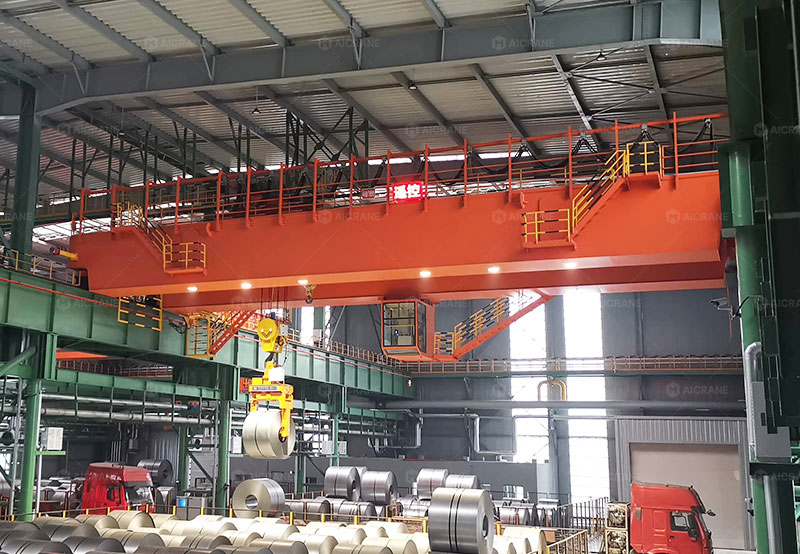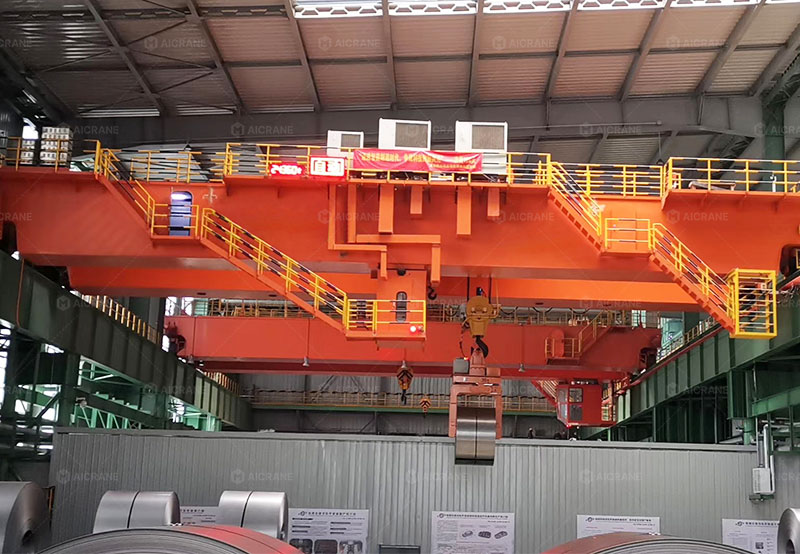Overhead cranes are indispensable in heavy industrial environments, allowing efficient and safe handling of bulky and heavy loads. A 40-ton overhead crane is a widely used capacity class, suitable for steel mills, power plants, shipyards, manufacturing workshops, and logistics facilities. Among its components, the electrical system plays a critical role in ensuring reliability, safety, and performance. A carefully engineered electrical design not only powers the crane but also optimizes control, reduces downtime, and extends equipment life. This article explores the essential considerations in electrical system design for a 40-ton overhead crane, covering power supply, control systems, safety features, cabling, and innovations.

Importance of Electrical Design in Heavy-Duty Cranes
The electrical system is the backbone of crane operation. For a 40 ton overhead crane, the electrical design must handle high currents, ensure smooth load movement, and prevent hazards such as overloads, short circuits, or power losses. Unlike smaller cranes, a 40-ton model requires a more sophisticated electrical network to accommodate multiple motors, frequency converters, control circuits, and protective devices. Poor design can result in frequent breakdowns, energy inefficiency, and safety risks, which directly affect plant productivity.
Power Supply Considerations
Voltage and Frequency
Most 40-ton overhead cranes operate on industrial power supplies, typically 380V–480V at 50Hz or 60Hz depending on the region. Voltage selection impacts motor performance and efficiency. For cranes handling long duty cycles or continuous operations, stable voltage with minimal fluctuation is crucial to prevent motor overheating or erratic operation.
Power Distribution
Electrical distribution begins at the main power source and branches into feeders supplying the hoist, trolley, and bridge motors. A well-designed distribution system incorporates:
-
Main disconnect switches for isolating the crane from the power grid.
-
Busbars or festoon systems to transmit power along the crane runway.
-
Overload protection devices to prevent excess current flow.
Energy Efficiency
Variable Frequency Drives (VFDs) are increasingly adopted in 40-ton double girder overhead cranes, optimizing motor energy usage by adjusting frequency and voltage according to load demands. This reduces energy consumption and minimizes mechanical stress on motors.
Motors and Drives
The electrical system must coordinate multiple motors:
-
Hoist motor – the most critical, designed to lift and lower 40-ton loads with precise speed control.
-
Trolley motor – moves the hoist along the bridge.
-
Bridge motor(s) – drive the entire crane along the runway.
Key Design Aspects
-
Motor ratings should be chosen to match the crane’s duty class (e.g., FEM, ISO, CMAA standards).
-
Starting method: VFDs or soft starters reduce inrush currents, improving efficiency and prolonging motor life.
-
Brake integration: Electromagnetic brakes controlled through the electrical system ensure safe stopping of loads.
Control System Design
The control system governs how operators interact with the crane. In 40-ton cranes, reliability and ergonomics are paramount.
Control Modes
-
Cabin control – operator sits in a cabin attached to the crane, using joysticks and panels.
-
Pendant control – operator walks alongside, connected via a wired pendant.
-
Remote control – wireless radio remote control overhead crane increasingly common for flexibility and safety.
Programmable Logic Controllers (PLCs)
Modern cranes integrate PLCs to manage motion sequences, safety interlocks, and communication between subsystems. PLCs allow customization, fault diagnostics, and integration with plant automation networks.
Human-Machine Interface (HMI)
Touchscreens or digital panels provide operators with real-time data such as load weight, motor temperature, fault alerts, and maintenance reminders.

Cabling and Conductor Systems
Festoon Systems
Festoon cable carriers guide electrical cables or hoses in loops along the bridge, allowing smooth movement of the trolley. They are durable and suitable for harsh environments.
Conductor Bars
Insulated conductor bars provide continuous power supply along the crane runway. They are space-efficient and reliable for high-duty operations.
Cable Selection
-
Copper conductors ensure conductivity and durability.
-
Flame-retardant insulation enhances fire safety.
-
Shielded cables reduce electromagnetic interference with sensitive electronic controls.
Proper cable sizing is essential to minimize voltage drop and prevent overheating, especially in long-span 40-ton cranes.
Safety Features in Electrical Design
Safety is non-negotiable in heavy factory overhead crane operations. Electrical design must integrate multiple protection systems:
-
Overload protection: Current sensors and relays disconnect the system if loads exceed rated capacity.
-
Emergency stop circuits: Large, easily accessible buttons cut power instantly in emergencies.
-
Grounding systems: Ensure safe dissipation of fault currents.
-
Anti-collision systems: Sensors prevent two cranes from colliding on the same runway.
-
Limit switches: Installed on hoists, trolleys, and bridges to restrict travel beyond safe limits.
-
Phase failure protection: Prevents equipment damage in case of missing or unbalanced phases.
Innovations in Electrical Systems
Electrical design for 40-ton overhead cranes is evolving with new technologies:
Smart Monitoring
IoT-enabled sensors continuously monitor parameters such as motor temperature, vibration, and energy consumption. Data is sent to maintenance teams for predictive servicing.
Regenerative Drives
Instead of dissipating braking energy as heat, regenerative drives feed energy back into the grid, reducing energy costs.
Wireless Power Transfer
Emerging systems use inductive power transfer instead of conductor bars, eliminating wear-prone components and improving reliability.
Energy Storage Integration
Some cranes integrate battery storage systems to smooth power demand peaks, reducing strain on industrial grids.
Maintenance and Reliability
A robust electrical system design must also consider maintainability:
-
Modular design: Components like drives, relays, and PLC modules can be replaced quickly.
-
Diagnostic tools: Fault codes and event logs simplify troubleshooting.
-
Spare parts availability: Use of standardized components reduces downtime.
Regular inspection of cables, connections, and protective devices ensures long-term reliability.
Conclusion
The electrical system design of a 40-ton overhead crane is far more than just wiring and motors. It is an integrated network of power supply, control mechanisms, safety devices, and monitoring systems working together to deliver reliable and safe lifting operations. A well-engineered design optimizes energy efficiency, ensures operator safety, and reduces lifecycle costs. As industries demand higher productivity and smarter operations, innovations such as VFDs, PLCs, regenerative braking, and IoT monitoring are reshaping how heavy-duty cranes are powered and controlled. For businesses investing in a 40-ton overhead crane, prioritizing electrical system design is crucial to achieving long-term performance and safety goals.